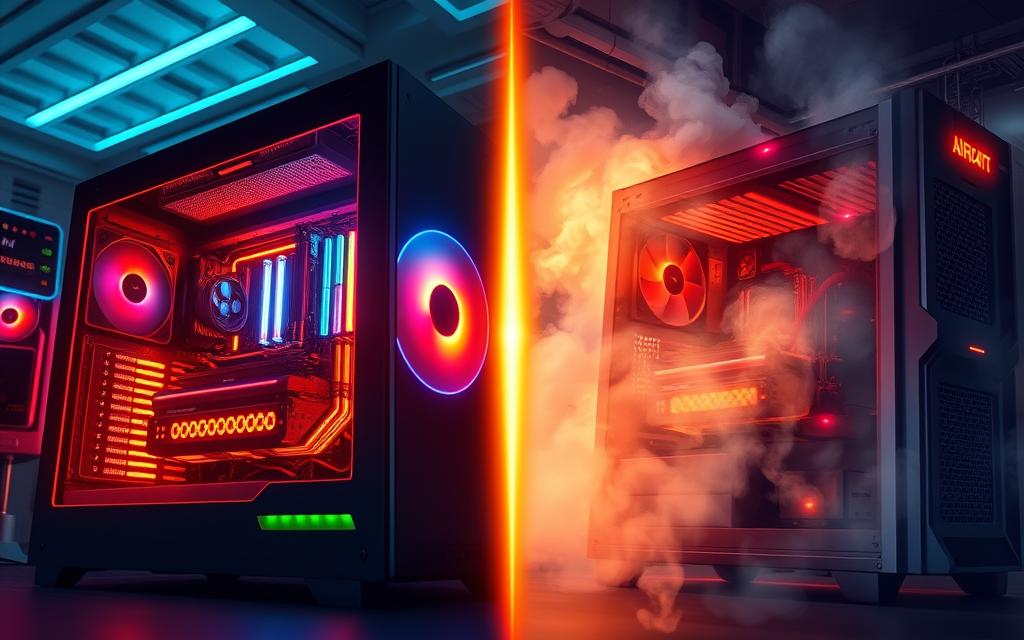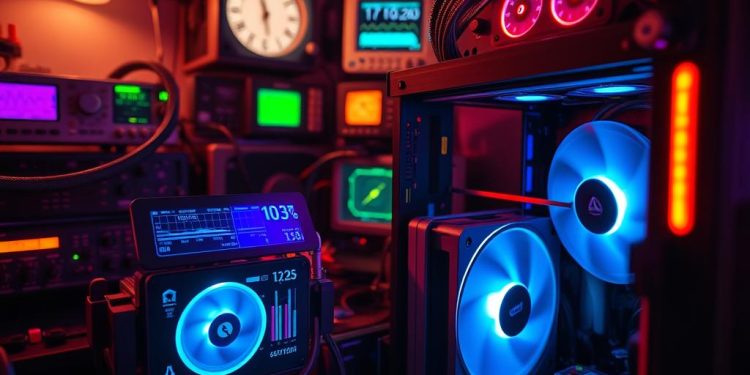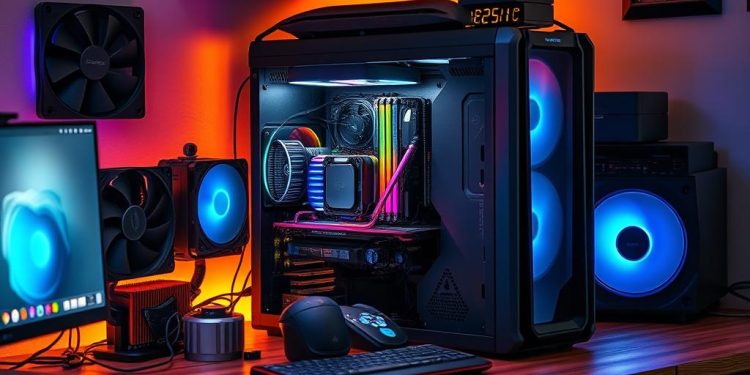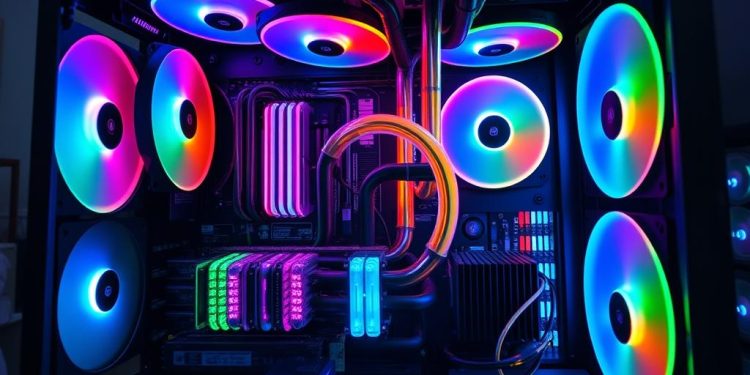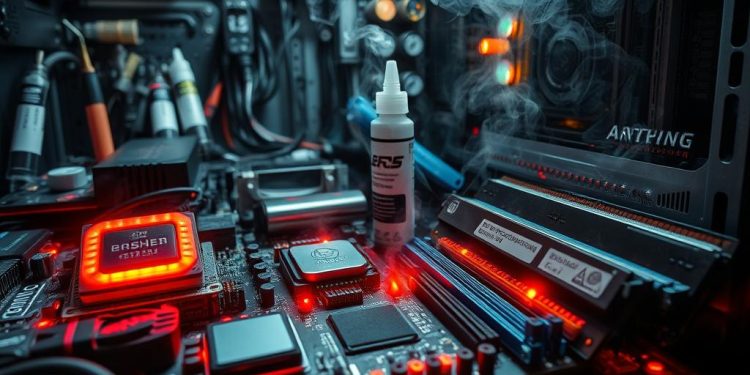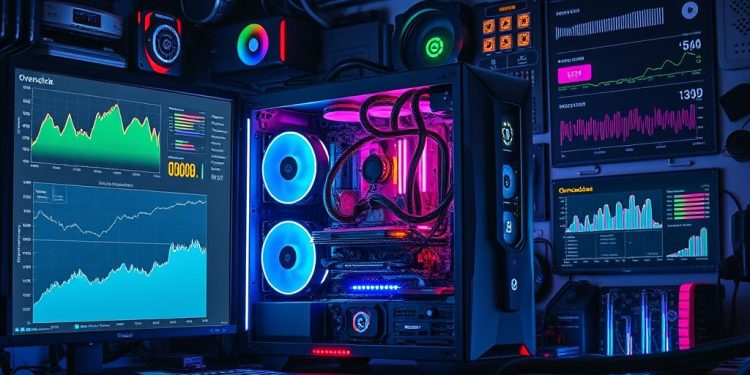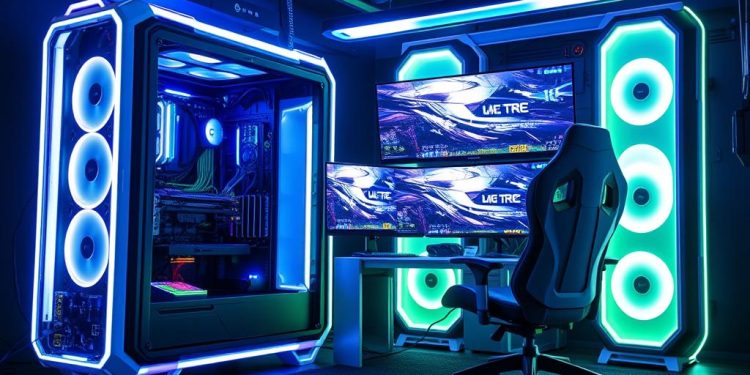Overclocking is a popular method for those looking to boost their computer’s performance beyond the manufacturer’s specifications. By increasing the clock speed of your components—such as the CPU or RAM—you can unlock significant performance improvements, especially in demanding applications and gaming scenarios. With enthusiasts often reporting enhancements of up to 20% in CPU and GPU performance, overclocking can lead to smoother gameplay and higher frame rates, making 60 FPS attainable in many settings.
However, the advantages of overclocking come with certain risks. Notably, while it can breathe new life into older systems and deliver exciting overclocking benefits, improper management may result in overheating, potentially voiding your warranty in most cases. This guide will navigate you through the pros and cons of overclocking, helping you weigh your options to determine whether it aligns with your computing needs.
What is Overclocking?
Overclocking represents a method of modifying the settings of your CPU or GPU to operate at speeds exceeding their factory-defined limits. Understanding the definition of overclocking helps clarify its appeal, especially among gamers and tech enthusiasts. By pushing hardware beyond its standard performance thresholds, you may gain substantial benefits in processing power and responsiveness.
Typically, what is overclocking can vary based on individual setups and goals. For instance, effective CPU and GPU overclocking can yield performance gains ranging from 100Hz to 300Hz, enhancing your system’s overall efficiency. This process allows users to complete resource-intensive tasks more rapidly, enabling a smoother experience in applications reliant on swift data handling.
Nevertheless, increased performance arises with certain challenges. Overclocking leads to heightened heat generation, which requires enhanced cooling solutions to prevent overheating. This practice can also raise power consumption as the CPU requires additional voltage. Keeping these factors in mind is essential to ensure stable and effective overclocking without compromising your hardware’s longevity.
Pros of Overclocking
Overclocking offers multiple advantages for users looking to enhance their PC experience. This technique allows you to boost the performance of your components, extend the lifespan of older hardware, and enjoy a superior gaming experience. Each of these factors contributes to its growing popularity among tech enthusiasts and everyday users alike.
Improved Overall Performance
One of the primary overclocking benefits is the potential for significantly improved performance. By increasing the clock speed of CPUs or RAM, you can experience performance gains that lead to quicker processing of tasks. This translates into smoother multitasking and faster application loading times, making it particularly beneficial for demanding workloads. Users can see CPU clock speeds rise by an extra 100Hz to 300Hz in practical situations, which can radically enhance overall system responsiveness.
New Life for Older Computers
Overclocking provides an effective solution for reviving old computers that struggle with modern applications. Instead of spending money on costly upgrades, users can often improve older hardware performance through overclocking techniques. This allows for a smoother performance in tasks that once rendered the systems barely usable. By leveraging cost-effective upgrades, you can extend the functionality of aging components and maintain their usability.
Better Gaming Experience
If you are a gaming enthusiast, overclocking can transform your gaming performance. It allows GPUs to reach enhanced frame rates, achieving jumps of up to 40% higher in benchmarks compared to stock performance. This improvement results in smoother gameplay and decreased input lag, which can be crucial in competitive settings. With proper cooling solutions, these enhancements can significantly elevate your gaming experience and immerse you further into your favorite titles.
| Aspect | Standard Performance | Overclocked Performance |
|---|---|---|
| CPU Clock Speed | Base Speed | Base Speed + 100Hz to 300Hz |
| Gaming Frame Rate | Standard Frame Rate | Up to 40% Higher |
| Gaming Input Lag | Higher Input Lag | Up to 25% Lower |
| Power Consumption | Standard Power Use | Additional 30% Increase |
| Cooling requirement | Standard Cooling | Enhanced Cooling Solutions Needed |
The Pros and Cons of Overclocking
Understanding the benefits vs drawbacks of overclocking is essential for anyone considering this practice. You can achieve notable performance enhancements, especially if you have older hardware. Overclocking can breathe new life into your system, pushing it beyond factory settings. Many users report significant improvements in gaming experiences and productivity applications. For instance, overclocking a GPU can increase clock speeds by 10% to 20%, resulting in higher Frames Per Second (FPS) during gameplay.
While the advantages are enticing, overclocking trade-offs cannot be overlooked. Increased temperatures can become a major concern, particularly under intensive stress like gaming or rendering. Normal CPU temperatures range between 104–149°F (40–65°C), but when overclocked, they may exceed 176°F (80°C), requiring effective cooling solutions. This rise in temperature can lead to a reduced lifespan of your components and potentially higher repair or replacement costs in the future.
Informed decision making is crucial before diving into overclocking. Warranties may be voided should damage occur due to overclocking practices. It’s important to review warranty terms thoroughly to avoid costly surprises. With these factors in mind, carefully weigh the benefits against the drawbacks to make a decision that aligns with your needs and budget.
| Factor | Pros | Cons |
|---|---|---|
| Performance | Improves FPS (5%-15%) and overall system speed | Can lead to overheating if not managed properly |
| Cost Efficiency | Maximizes performance without immediate upgrades | Potential higher repair costs due to reduced lifespan |
| Warranties | No direct costs for upgrades | May void warranties on components |
| Component Lifespan | Extends usability of older systems | Overstraining components can shorten lifespan |
Cons of Overclocking
When considering overclocking your PC components, it’s essential to understand the potential downsides. While increased performance may attract some users, several issues can arise that impact both functionality and component integrity.
Overheating Risks
One of the critical concerns when overclocking is the increased risk of overheating issues. As you push your components beyond their intended limits, excess heat is generated. This often results in thermal throttling, where performance decreases to manage temperatures. Effective cooling requirements become crucial at this point. Utilizing powerful fans or liquid cooling solutions can help maintain safe operating temperatures, thus reducing the chance of hardware damage.
Reduced Hardware Lifespan
Overclocking can cause a significant lifespan reduction of your PC components. Studies suggest that when GPUs are pushed beyond manufacturer specifications without adequate cooling, their lifespan may decrease by 20-50%. The stress and heat generated can lead to accelerated wear and tear, resulting in increased repair or replacement costs over time. Upgrading cooling systems can mitigate some of these risks, potentially extending the effective lifespan of your hardware significantly.
Voided Warranties
Another vital aspect to consider involves the risk of warranty voiding. Many manufacturers have specific terms that restrict modifications like overclocking. Approximately 30-40% of users have reported experiencing warranty issues after overclocking, meaning that should anything go wrong, you might find yourself unprotected. Carefully reviewing manufacturer terms is essential before attempting any overclocking to avoid unexpected costs down the line.
Should You Overclock Your PC Components?
Determining if overclocking is worth it hinges on your unique requirements and the tasks you perform. If gaming or intensive applications dominate your usage and your current hardware lags, overclocking could prove beneficial by enhancing overall performance. Certain Intel CPUs, marked with a “K” (like the Intel Core i9-13900K), are built for overclocking, while all AMD Ryzen CPUs support this feature. Your user suitability for overclocking largely depends on your willingness to take on associated risks.
Overclocking considerations include potential system instability due to excessive tweaks. This could lead to application crashes and overall hardware malfunction. A proper setup with effective cooling is crucial, as inadequate cooling may damage CPUs or graphics cards permanently. Therefore, investing in quality cooling systems, like liquid cooling, becomes essential for effectively managing increased performance levels.
The performance gains from overclocking can range from 5% to significant improvements, particularly with lower-resolution gaming. Although the effect may be less dramatic on modern CPUs, it can still transform slower models to run at speeds closer to more advanced versions. Keep in mind that if your system has bottlenecks, such as slow HDDs, the benefits of overclocking can diminish.
Ultimately, if you feel confident in navigating overclocking and are prepared to invest the necessary time and research, it could lead to enhanced performance, particularly in CPU-intensive games. Regular stress testing after changes is crucial to maintain stability and safety in your setup. If your tasks are basic or you prefer a simpler experience, exploring newer components or systems may better suit your needs without the complexities introduced by overclocking.
Conclusion
In summary of overclocking, it’s evident that this practice offers a potent mix of elevated performance and inherent risks. By pushing your PC components beyond their standard clock speeds, you may experience noticeable enhancements in gaming performance and overall system responsiveness. Particularly for older setups or demanding applications, the right overclock can breathe new life into your hardware, potentially delaying costly upgrades.
However, the final thoughts on overclocking reveal that significant challenges accompany these advantages. Increased power consumption and the need for upgraded cooling solutions can escalate costs, while also putting your components at risk of overheating and premature failure. Moreover, the likelihood of voiding warranties underscores the importance of conducting thorough research and making an informed decision about your capacity and willingness to manage these variables.
Ultimately, if you decide to venture into the world of overclocking, ensuring you have proper cooling and a robust power supply can drastically improve your chances of success. Engaging in this practice with a clear understanding of the potential benefits and drawbacks can lead to rewarding experiences in your computing endeavors.

